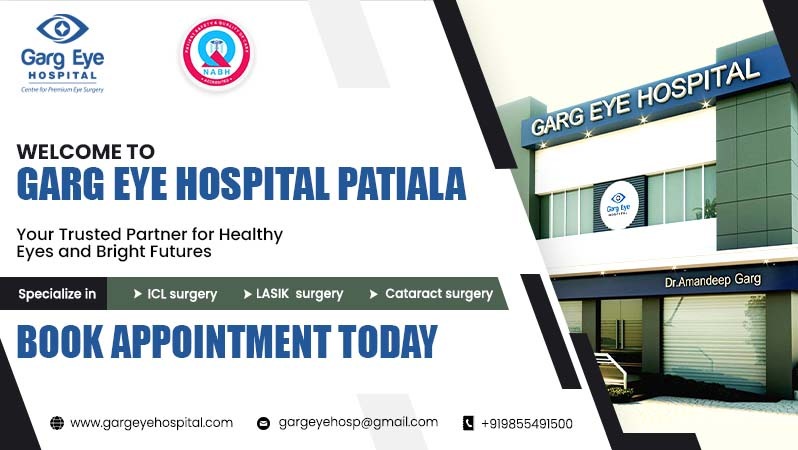Cataract surgery has long been one of the most common and successful medical procedures worldwide. With advancements in technology, the process has evolved significantly, improving outcomes, reducing recovery time, and enhancing the overall patient experience. As we step into 2025, new innovations continue to transform cataract surgery, making it safer, more precise, and highly customized. Patients undergoing cataract surgery today have access to cutting-edge techniques, smart intraocular lenses, artificial intelligence-assisted diagnostics, and robotic precision.
If you are considering cataract surgery in 2025 or simply want to understand the latest developments in the field, this article will guide you through the most recent technologies, the improved surgical experience, and what patients can expect before, during, and after the procedure.
Why Choose Garg Eye Hospital for Cataract Surgery?
Garg Eye Hospital, a leading eye care center, is at the forefront of these advancements, offering state-of-the-art cataract surgery solutions. With cutting-edge technology, experienced surgeons, and patient-centric care, Garg Eye Hospital ensures the highest standards in cataract treatment.
- Advanced AI-Assisted Diagnostics: Our hospital uses the latest AI-powered imaging systems for accurate preoperative assessments, ensuring personalized treatment plans.
- Femtosecond Laser Precision: We utilize laser-assisted techniques for safer and more precise cataract removal.
- Premium Intraocular Lenses (IOLs): Choose from a range of smart IOLs, including trifocal, accommodating, and light-adaptive lenses.
- Robotic-Assisted Surgery: Our robotic systems enhance surgical accuracy, providing superior outcomes with minimal recovery time.
- Personalized Patient Care: At Garg Eye Hospital, we offer tailored solutions to meet each patient’s unique vision needs.
The Latest Technologies in Cataract Surgery
1. AI-Powered Preoperative Assessment
Artificial intelligence (AI) has transformed the way cataract surgery is planned. AI-powered diagnostic tools provide surgeons with real-time data on the patient’s eye health, enabling better decision-making. These systems analyze the structure of the eye, measure cataract density, and suggest the most suitable intraocular lens (IOL) based on the patient’s lifestyle and vision needs. AI-based imaging also helps predict potential complications and ensures personalized treatment for every patient.
2. Femtosecond Laser-Assisted Cataract Surgery (FLACS)
One of the biggest advancements in cataract surgery over the past decade has been the increasing adoption of femtosecond laser-assisted techniques. By 2025, femtosecond lasers have become more precise and efficient. Unlike traditional manual procedures, FLACS automates key steps such as corneal incision, capsulotomy, and lens fragmentation, resulting in better surgical outcomes. The laser reduces human error and improves accuracy, leading to faster healing times and fewer complications.
3. Smart Intraocular Lenses (IOLs)
Intraocular lenses have seen remarkable advancements in 2025, making them more adaptive and functional than ever before. Traditional monofocal IOLs, which only correct vision at one distance, are now being replaced by smart lenses that can dynamically adjust focus depending on the lighting and the visual needs of the patient.
Some of the latest developments in IOLs include:
- Light-Adaptive IOLs: These lenses adjust automatically to different lighting conditions, reducing glare and enhancing vision clarity.
- Extended Depth of Focus (EDOF) IOLs: These lenses provide a continuous range of vision, reducing dependency on glasses after surgery.
- Accommodating IOLs: These lenses mimic the natural movement of the eye’s crystalline lens, offering a more natural vision correction.
- Multifocal and Trifocal IOLs: These lenses allow patients to see clearly at near, intermediate, and far distances without glasses.
4. Robotic-Assisted Cataract Surgery
Robotic assistance has made cataract surgery more precise than ever before. While human surgeons still perform the procedure, robotic systems assist by stabilizing hand movements, making incisions with micrometer accuracy, and optimizing IOL placement. These systems provide real-time feedback, helping surgeons achieve superior outcomes with minimal risk.
5. Micro-Incision Cataract Surgery (MICS)
Minimally invasive techniques such as Micro-Incision Cataract Surgery (MICS) have further improved the safety and recovery of cataract procedures. Using ultra-small incisions (less than 2mm), MICS allows for self-sealing wounds, eliminating the need for stitches and reducing post-operative discomfort. This innovation has made cataract surgery an outpatient procedure, with patients able to return to normal activities much sooner than before.
What to Expect During Cataract Surgery in 2025
With these advancements, the patient journey for cataract surgery has become more seamless and efficient. Here is what to expect at different stages of the process:
Pre-Surgery Preparation
Patients undergo comprehensive eye assessments using AI-powered imaging and diagnostic tools. These scans help the surgeon determine the severity of the cataract and select the best intraocular lens for the patient’s needs. The consultation process is now more interactive, with virtual simulations allowing patients to preview how different IOLs will affect their vision post-surgery.
During Surgery
- Duration: The procedure typically takes 10 to 15 minutes per eye, thanks to laser precision and robotic assistance.
- Anesthesia: Surgery is performed under local anesthesia (eye drops) with no need for general anesthesia.
- Procedure: A femtosecond laser or ultrasonic probe is used to break the cloudy lens into tiny fragments, which are then gently removed. The new intraocular lens is implanted in the same location to restore vision.
- Comfort: The latest surgical techniques ensure a pain-free experience with minimal discomfort.
Post-Surgery Recovery
- Faster Healing: With micro-incisions and laser-assisted procedures, recovery time has significantly decreased. Most patients can resume normal activities within 24 hours.
- Improved Vision: Many patients experience clearer vision almost immediately, with full stabilization within a few weeks.
- Fewer Side Effects: Advanced lens materials and coatings have reduced risks like glare, halos, and posterior capsule opacification (PCO).
- Follow-Up Care: AI-powered remote monitoring allows patients to track their recovery progress from home, with virtual consultations available for post-surgery follow-ups.
Book Your Cataract Surgery at Garg Eye Hospital
If you are looking for world-class cataract surgery with the latest advancements, Garg Eye Hospital is your trusted partner for eye care. Our expert team ensures precise diagnosis, state-of-the-art treatment, and a seamless recovery process.
Visit us at: Passey Road, Near Gurudwara Dukh Niwaran Sahib, Patiala, Punjab – 147001
Call us: +91 9781-091-500
Website:https://www.gargeyehospital.com/contact-us/
Experience the future of vision correction with the best in eye care at Garg Eye Hospital.





